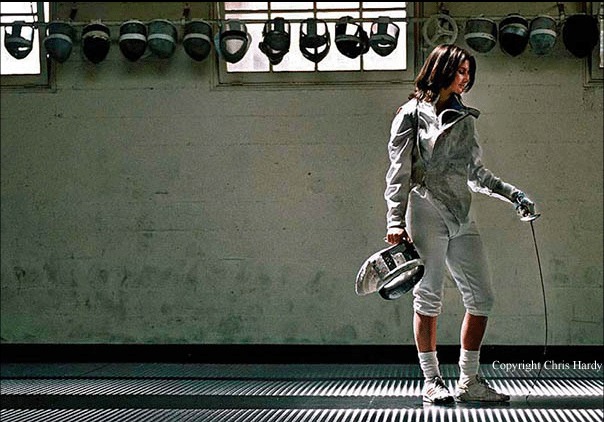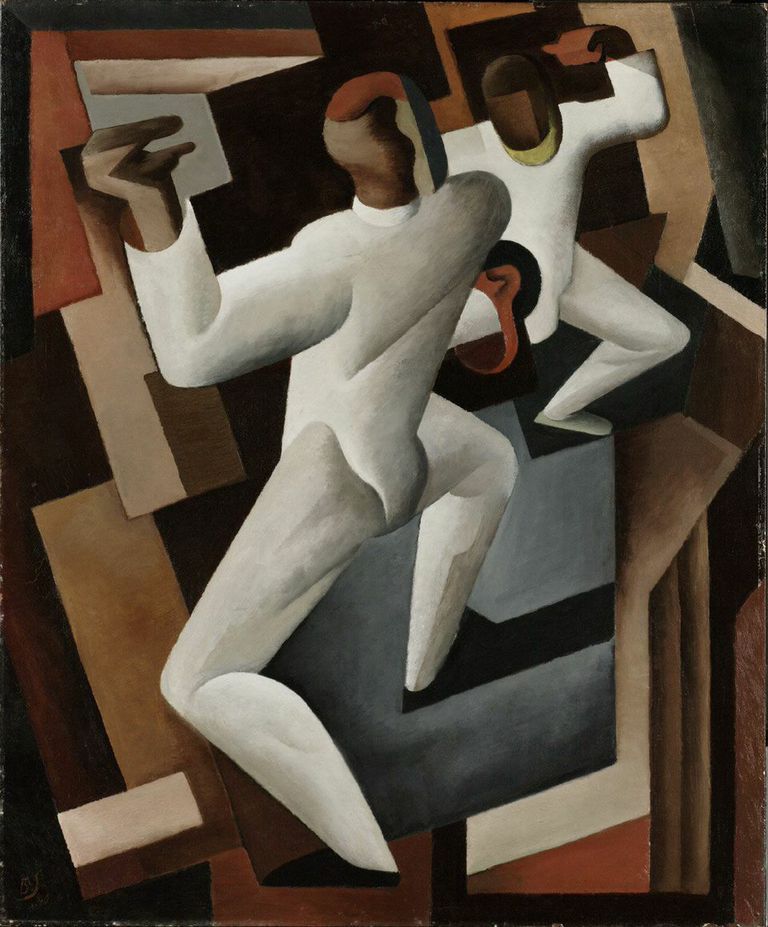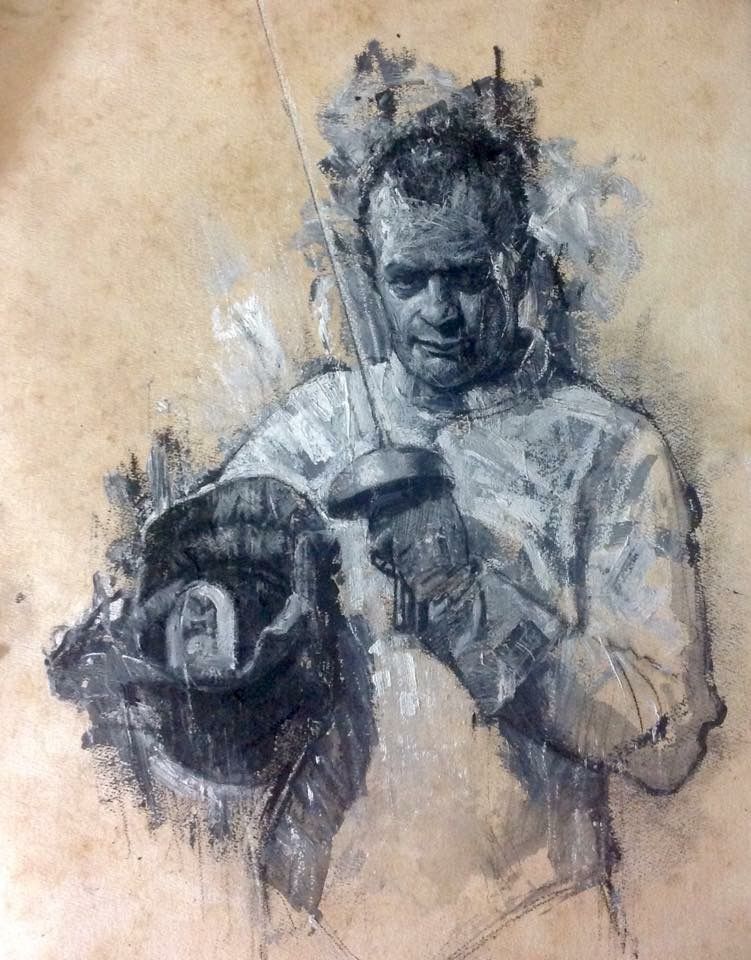
Sparring is more the key to developing fencing strength or fencing proficiency than any other thing you can do. You can focus on individual lessons, group lessons, line drills, good advice, books you read, and competitive experience, but all is for not, if you don’t know how to spar.
I was a boxer for many years before I ever heard of fencing. The one thing that separated boxers from people who ended up not boxing was sparring technique. You think in boxing you have an option. Perhaps you decide to work on your development. If you think that boxing and competition are the same thing, they’re going to get out there and try to knock each other out and there can be no learning. Boxers soon learn that there has to be a way to train without making it all out warfare. Sparring means we don’t hit hard, it means we hit for touches. When boxers learn to hit for touches, they are really learning power, because they learn to control the quality of the punch, which develops tremendous sensitivity. With the control it takes to hit lightly, you automatically learn to release your energy so that you can go as hard as you want to and there is no limit to how hard that can be given the right timing and distance. People who go on slugging all the time and cannot slow down and control the quality of their actions never learn to hit hard. The same is true in fencing, but it is more difficult to see because in fencing you can hit someone really hard and not hurt them. You can go for touches and there is nothing that reminds you that that might not be the way to go. If you start slugging in boxing, someone gets hurt pretty fast and those two boxers quit boxing each other, so they have nobody to train with. In fencing, you have an alternative. You can fence for touches, which means competition or you can fence for sparring, which means the learning process in light competitive practice. The learning process is the focal point and the action of scoring touches is the secondary factor.

Sparring offers the fencer the same as it offers the boxer–a place where you can go try things out. If it does not work, that’s fine. It has not cost anything. On failing an action, you learn what you should not be doing, which is more important than what you should be doing. Fencing is a subtractive process rather than an additive one. In the process of fencing and in sparring, you are learning what you should discontinue in your game. You shed the over-reaction, you shed too much attack-oriented fencing, you shed this and that and pretty soon you end up with the stuff that works.

If you come for an evening of fencing and do nothing but get into ego contests, where you are so insecure and uptight about what you are doing that you can’t afford to be hit and that your whole motivation is nothing but hitting your opponent all the time, you’re not going to learn anything. Come ten years from now, you will be fencing the same way you are right now. It is the old saying, “practice slow and learn fast.” Sparring allows you to do that.
When I come for an evening of sparring, which means I am going to fence at about 70% speed and strength, I set a goal. I decide to be very conscious about distance and footwork. In the process of doing that, I am going to get hit a lot. My opponents may not know that I am sparring. They may be getting excited that he is hitting, but who is learning? Chances are that I am going to be learning more than they are. To top that, they are under the illusion that they are fencing someone at full strength, but they are really getting a very false impression. People who won’t spar in a room where people are sparring usually end up in the final analysis, at the bottom of the class.
Occasionally you should say “Let’s go 5 or 10 touches, or the whole evening of competition”. In that way everyone knows what is going on. Unfortunately, you may go in for an evening of sparring and come up against some “ninny” who thinks it is a competition and is hitting you all the time. You feel your adrenalin release and your own insecurities come to the surface. Suddenly the guy hits you again and you decide to get even. You hit them and suddenly the sparring is over and you end up with what I call Ulin, Minnesota level competition. Competition between two guys where it does not make any difference. There are no medals on the table and there are no score sheets–that’s just a waste of time.
A nice procedure for sparring is to set a goal for yourself. Set an assignment for yourself and fence the whole evening just trying to set your opponent up for that move or action to see if you can control him/her enough to bring off that move. If you can do that, you’re sparring in the best sense of the word.

You are saying to yourself, “I won’t do this and I won’t do that. I’m going to fence the whole evening and I won’t score unless I can do this action”. By giving yourself a restriction, all aspects of the game begin to clarify. The things you don’t allow yourself to do reveal themselves. You begin to ask yourself “why did you put those restrictions on myself?” This forces you to realize the strength of the things you are not using, plus you put yourself in a position to try new techniques that you can’t afford to try when you are out for serious touches. You can actually try techniques that you are very weak on so you are going to get hit a lot, but in time that stuff is going to come together if you keep working on it and you’ve patched up one part of your game.
Every human will give you an opportunity to practice some different facet of the game. Because no two people fence alike, you will soon become sensitive to what you can practice against any given person. If you’ve got someone who absolutely refuses to attack and you were planning to work on your parries, instead of both of you looking at each other the whole time, you might just switch your emphasis and see if you can get him to attack you by moving in or by presenting a bigger invitation. If this does not work, maybe it is time to call it quits and practice your attacks instead. So, for the whole evening you just try to set the time up for a direct action. Maybe, you won’t get but one out of ten to work the entire evening. However, if you can get one to work, I’ll assure you, you can get two to work the next evening. The next evening you might be able to get four to work. Pretty soon you are on the road to scoring with simple and direct actions. Another person might say “I am going to practice my direct attacks. They try and try and it just fails and they are not getting anything out of the practice except frustration. Maybe at that point they are ready to change their sparring assignment. “Well, since I can’t hit on a direct action, maybe I should try practicing one-two or beat disengage attacks.” So, they readjust their sparring assignment right on the spot and continue sparring with something they might have better success at. You should find no end of the things you are able to spar with.

What I like to do as a sparring procedure with any given individual I fence, is start off sparring. I have fenced for so many years that it doesn’t take but ten seconds for me to find out what I can work on. I like to practice things I don’t do well. Now, what I also like to do, at the end of a sparring session, is say “Okay, let’s fence five.” That way you can get the competition out of your system. You’ll find that if you can fence for an hour without seriously being dragged into the competition, which means sparring, when you finally allow yourself to fence for touches, your game just goes straight into the air. It is like learning to fence with strength in reserve. Try sparring with only 80% or 70% of your capacity. See if you can fence slowly. You don’t always have to be going at full speed. See if you can hit somebody at slow speed. You’ll learn a lot. If you can get used to fencing at less than what you perceive is your full capacity, all sorts of wonderful learning experiences happen. You’ll be able to see things more clearly. You do not have so much adrenaline in your system, so you can more objectively see what you are doing. At the end of the evening fence for touches and see the contrast between the sparring and the competitive approach.
Sparring does not mean that you go out and let people hit you all the time. It means you commit yourself to a particular line of action that you are not good at or that you need improvement in and see if you can work on that and still survive. You might as well know that as long as you fence your strongest game during informal combat, you are not progressing.
You’ve got to work on the weak parts of your game and the only way you can is to actually use that stuff in a combat situation and that means sparring. You will learn to fence at less than full capacity. To fence with less than you think you have and, all of a sudden, you discover a wealth of material you didn’t know you had. A person who is always fencing at 100% in practice situations, has very little chance of winning.

Sparring allows you an unknown quantity in the relationship and you realize that tournaments are nothing but unknown quantities. Sparring keeps you in touch with having to face a situation where it is not always nailed down like a lesson.
Sparring is a special world that champions live in and the non-champions can’t understand. It is a whole world unto itself. It takes much more skill to fence well beneath your game, than it does just to turn everything on that you’ve got. If you come out and fence at about 80% of your strength, you’ll find your game will get better, plus when the crunch is on, you’ll find your strengths will get better too.
Only show your opponent enough to beat them. If you can beat someone with a very easy move, you should. You don’t need to throw everything at the person regardless of who you are. Learning to fence at a slower speed than you can actually go is just excellent for learning to restrict yourself and to stay on that restriction. In tournament fencing, if you are up against tough competition your ability to change and do something else is just survival. You just can’t go out and do your strength or specialty because they’ll stop that every time. Once your specialty fails, you’ve got to have something to fall back on, so you can still change your game and come out on top. If you discover it’s 4-0 in favor of your opponent and you can’t change, you might as well give them the last touch.
Sparring is very important for the competitive fencer. It really counts on the strip. You can fence someone a thousand times in practice and beat them, but the only time it counts is in competition. People tend to forget that. Here is the learning process, there is where you do it. It doesn’t mean anything to win all your bouts in practice.
I tell my fencers if they are winning all their bouts, they are doing something wrong, because they are not practicing their weaknesses. One type of sparring might be to work on specific actions and another might be to work on the basics. The best fencers in the world still work on their footwork–still work on their lunges and mobility. The only difference is that they are doing this while they are facing an opponent. It is a whole different thing to take a lesson where the teacher is trying to help you. When you are working with an opponent, they are not trying to help you at all. Sparring enables you to make that transfer. If you are not sure what action to work on just free fence for a while and you’ll see. If you are working on an action and it is successful, you know that action is good and should work in the competition. There is no sense in continuing to practice it. You should work on something you cannot do well or feel weak or insecure in doing. It is very different from a line drill where you tell your partner you want to do this or that. He doesn’t know and that’s also part of the sparring–to mask your intentions. After all, in fencing, you want to mask your true intentions from your opponent. You want to keep your opponent guessing. Your partner should not know you are sparring. The best thing if you are successful with an action is not to use that again. Work on the things you do not feel comfortable doing.
Free fencing never really does anything for your game. You are prone to get big and prone to carelessness. A very important factor in fencing is if you get touched, to know why you got touched. Were you too slow? Too big? If you don’t understand that you will keep on getting touched with the same action over and over again. If you don’t know how or why you were hit, ask your opponent. As long as you are out of the competition, most fencers are more than happy to tell you what they did to score. Always thank them, and what they told you will give you something to practice in your next sparring situation.
Fencing is a very disciplined sport. The only time you unleash the weapon is on the strip.
Charles Alan Palmer Selberg passed away at home on March 29th, 2012 at the age of 81 after a brief battle with lung cancer. He was born in Grand Forks, North Dakota on August 2nd ,1930.
The ideas Charles Selberg expressed at Michael D’saro’s summer fencing camp have been a tremendous help to me and my students. While this lecture was presented in 1978, the essence of his message remains timeless.
Artwork by Paul Holder
Editor: Randi Elise McKenzie, M.Ed., Emerita Assistant Dean for Student Affairs, San Diego State University
Article submitted: Dana Hohn




Amazing illustrations!